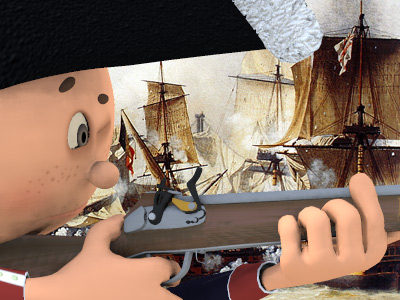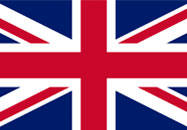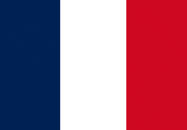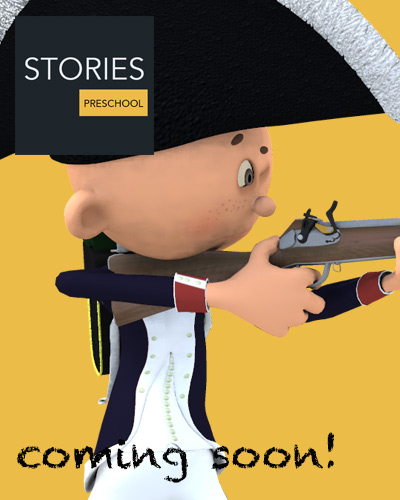Napoleonic Wars (1803-1815)
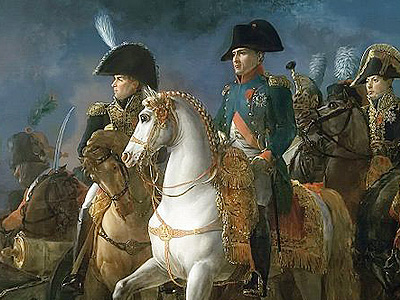
Military Legacy
Enlarged Scope
Until the time of Napoleon, European states employed relatively small armies, made up of both national soldiers and mercenaries. These regulars were highly drilled professional soldiers. Ancien Régime armies could only deploy small field armies due to rudimentary staffs and comprehensive yet cumbersome logistics. Both issues combined to limit field forces to approximately 30,000 men under a single commander.
Military innovators in the mid-18th century began to recognise the potential of an entire nation at war: a "nation in arms".
The scale of warfare dramatically enlarged during the Revolutionary and subsequent Napoleonic Wars. During Europe's major pre-revolutionary war, the Seven Years' War of 1756–1763, few armies ever numbered more than 200,000 with field forces often numbering less than 30,000. The French innovations of separate corps (allowing a single commander to efficiently command more than the traditional command span of 30,000 men) and living off the land (which allowed field armies to deploy more men without requiring an equal increase in supply arrangements such as depots and supply trains) allowed the French republic to field much larger armies than their opponents. Napoleon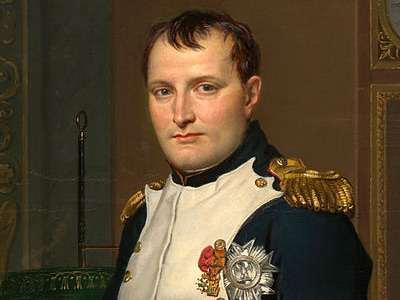 Napoleon Bonaparte (1769-1821), was a French military and political leader who rose to prominence during the French Revolution and led several successful campaigns during the French Revolutionary Wars. As Napoleon I, he was Emperor of the French from 1804 until 1814, and again in 1815. One of the greatest commanders in history, his wars and campaigns are studied at military schools worldwide. Napoleon Bonaparte » ensured during the time of the French republic that separate French field armies operated as a single army under his control, often allowing him to substantially outnumber his opponents. This forced his continental opponents to increase the size of their armies as well, moving away from the traditional small, well drilled Ancien Régime armies of the 18th century to mass conscript armies.
Napoleon Bonaparte (1769-1821), was a French military and political leader who rose to prominence during the French Revolution and led several successful campaigns during the French Revolutionary Wars. As Napoleon I, he was Emperor of the French from 1804 until 1814, and again in 1815. One of the greatest commanders in history, his wars and campaigns are studied at military schools worldwide. Napoleon Bonaparte » ensured during the time of the French republic that separate French field armies operated as a single army under his control, often allowing him to substantially outnumber his opponents. This forced his continental opponents to increase the size of their armies as well, moving away from the traditional small, well drilled Ancien Régime armies of the 18th century to mass conscript armies.
The Battle of Marengo, which largely ended the War of the Second Coalition, was fought with fewer than 60,000 men on both sides. The Battle of Austerlitz which ended the War of the Third Coalition involved fewer than 160,000 men. The Battle of Friedland which led to peace with Russia Russian Empire was an empire and the final period of the Russian monarchy from 1721 to 1917, ruling across large parts of Eurasia. The rise of the Russian Empire coincided with the decline of neighbouring rival powers: the Swedish Empire, the Polish–Lithuanian Commonwealth, Qajar Iran, the Ottoman Empire, and Qing China. Russia remains the third-largest empire in history, surpassed only by the British Empire and the Mongol Empire. in 1807 involved about 150,000 men.
Russian Empire was an empire and the final period of the Russian monarchy from 1721 to 1917, ruling across large parts of Eurasia. The rise of the Russian Empire coincided with the decline of neighbouring rival powers: the Swedish Empire, the Polish–Lithuanian Commonwealth, Qajar Iran, the Ottoman Empire, and Qing China. Russia remains the third-largest empire in history, surpassed only by the British Empire and the Mongol Empire. in 1807 involved about 150,000 men.

In 1800 Bonaparte took the French Army across the Alps, eventually defeating the Austrians at Marengo

In 1800 Bonaparte took the French Army across the Alps, eventually defeating the Austrians at Marengo
( Click image to enlarge)
After these defeats, the continental powers developed various forms of mass conscription to allow them to face France France, officially the French Republic is transcontinental country predominantly located in Western Europe and spanning overseas regions and territories in the Americas and the Atlantic, Pacific and Indian Oceans. France reached its political and military zenith in the early 19th century under Napoleon Bonaparte, subjugating much of continental Europe and establishing the First French Empire. on even terms, and the size of field armies increased rapidly. The battle of Wagram of 1809 involved 300,000 men, and 500,000 fought at Leipzig in 1813, of whom 150,000 were killed or wounded.
France, officially the French Republic is transcontinental country predominantly located in Western Europe and spanning overseas regions and territories in the Americas and the Atlantic, Pacific and Indian Oceans. France reached its political and military zenith in the early 19th century under Napoleon Bonaparte, subjugating much of continental Europe and establishing the First French Empire. on even terms, and the size of field armies increased rapidly. The battle of Wagram of 1809 involved 300,000 men, and 500,000 fought at Leipzig in 1813, of whom 150,000 were killed or wounded.
About a million French soldiers became casualties (wounded, invalided or killed), a higher proportion than in the First World War World War I, also known as the First World War, or the Great War, was a global war originating in Europe that lasted from 28 July 1914 to 11 November 1918. More than 70 million military personnel, including 60 million Europeans, were mobilized in one of the largest wars in history. The war drew in all the world's economic great powers, assembled in two opposing alliances: the Allies versus the Central Powers of Germany and Austria-Hungary. View World War I ». The European total may have reached 5,000,000 military deaths, including disease.
World War I, also known as the First World War, or the Great War, was a global war originating in Europe that lasted from 28 July 1914 to 11 November 1918. More than 70 million military personnel, including 60 million Europeans, were mobilized in one of the largest wars in history. The war drew in all the world's economic great powers, assembled in two opposing alliances: the Allies versus the Central Powers of Germany and Austria-Hungary. View World War I ». The European total may have reached 5,000,000 military deaths, including disease.
France had the second-largest population in Europe by the end of the 18th century (27 million, as compared to Britain's 12 million and Russia's 35 to 40 million). It was well poised to take advantage of the levée en masse. Before Napoleon's efforts, Lazare Carnot played a large part in the reorganisation of the French army from 1793 to 1794—a time which saw previous French misfortunes reversed, with Republican armies advancing on all fronts.
The French army peaked in size in the 1790s with 1.5 million Frenchmen enlisted although battlefield strength was much less. Haphazard bookkeeping, rudimentary medical support and lax recruitment standards ensured that many soldiers either never existed, fell ill or were unable to withstand the physical demands of soldiering.
About 2.8 million Frenchmen fought on land and about 150,000 at sea, bringing the total for France to almost 3 million combatants during almost 25 years of warfare.

The Battle of Trafalgar

The Battle of Trafalgar
( Click image to enlarge)
Britain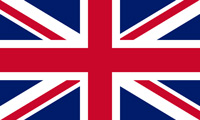 The United Kingdom of Great Britain and Ireland was a sovereign state in Northwestern Europe that comprised the entirety of the British Isles between 1801 and 1922. The United Kingdom, having financed the European coalition that defeated France during the Napoleonic Wars, developed a large Royal Navy that enabled the British Empire to become the foremost world power for the next century. had 750,000 men under arms between 1792 and 1815 as its army expanded from 40,000 men in 1793 to a peak of 250,000 men in 1813. Over 250,000 sailors served in the Royal Navy. In September 1812, Russia had 900,000 enlisted men in its land forces, and between 1799 and 1815 2.1 million men served in its army. Another 200,000 served in the Russian Navy. Out of the 900,000 men, the field armies deployed against France numbered less than 250,000.
The United Kingdom of Great Britain and Ireland was a sovereign state in Northwestern Europe that comprised the entirety of the British Isles between 1801 and 1922. The United Kingdom, having financed the European coalition that defeated France during the Napoleonic Wars, developed a large Royal Navy that enabled the British Empire to become the foremost world power for the next century. had 750,000 men under arms between 1792 and 1815 as its army expanded from 40,000 men in 1793 to a peak of 250,000 men in 1813. Over 250,000 sailors served in the Royal Navy. In September 1812, Russia had 900,000 enlisted men in its land forces, and between 1799 and 1815 2.1 million men served in its army. Another 200,000 served in the Russian Navy. Out of the 900,000 men, the field armies deployed against France numbered less than 250,000.
There are no consistent statistics for other major combatants. Austria's forces peaked at about 576,000 (during the War of the Sixth Coalition) and had little or no naval component yet never fielded more than 250,000 men in field armies. After Britain, Austria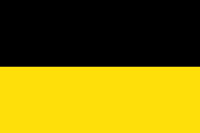 Austrian Empire was a Central-Eastern European and multinational great power from 1804 to 1867, created by proclamation out of the realms of the Habsburgs. During its existence, it was the third most populous monarchy in Europe after the Russian Empire and the United Kingdom. Along with Prussia, it was one of the two major powers of the German Confederation. The empire was proclaimed by Francis II in 1804 in response to Napoleon's declaration of the First French Empire. proved the most persistent enemy of France; more than a million Austrians served during the long wars. Its large army was overall quite homogeneous and solid and in 1813 operated in Germany (140,000 men), Italy and the Balkans (90,000 men at its peak, about 50,000 men during most of the campaigning on these fronts). Austria's manpower was becoming quite limited towards the end of the wars, leading its generals to favour cautious and conservative strategies, to limit their losses.
Austrian Empire was a Central-Eastern European and multinational great power from 1804 to 1867, created by proclamation out of the realms of the Habsburgs. During its existence, it was the third most populous monarchy in Europe after the Russian Empire and the United Kingdom. Along with Prussia, it was one of the two major powers of the German Confederation. The empire was proclaimed by Francis II in 1804 in response to Napoleon's declaration of the First French Empire. proved the most persistent enemy of France; more than a million Austrians served during the long wars. Its large army was overall quite homogeneous and solid and in 1813 operated in Germany (140,000 men), Italy and the Balkans (90,000 men at its peak, about 50,000 men during most of the campaigning on these fronts). Austria's manpower was becoming quite limited towards the end of the wars, leading its generals to favour cautious and conservative strategies, to limit their losses.
Prussia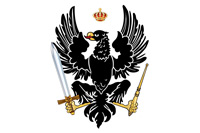 The Kingdom of Prussia was a German kingdom that constituted the state of Prussia between 1701 and 1918. It was the driving force behind the unification of Germany in 1871 and was the leading state of the German Empire until its dissolution in 1918. Although it took its name from the region called Prussia, it was based in the Margraviate of Brandenburg. Its capital was Berlin. never had more than 320,000 men under arms at any time. In 1813-1815, the core of its army (about 100,000 men) was characterised by competence and determination, but the bulk of its forces consisted of second- and third-line troops, as well as militiamen of variable strength. Many of these troops performed reasonably well and often displayed considerable bravery but lacked the professionalism of their regular counterparts and were not as well equipped. Others were largely unfit for operations, except sieges. During the 1813 campaign, 130,000 men were used in the military operations, with 100,000 effectively participating in the main German campaign, and about 30,000 being used to besiege isolated French garrisons.
The Kingdom of Prussia was a German kingdom that constituted the state of Prussia between 1701 and 1918. It was the driving force behind the unification of Germany in 1871 and was the leading state of the German Empire until its dissolution in 1918. Although it took its name from the region called Prussia, it was based in the Margraviate of Brandenburg. Its capital was Berlin. never had more than 320,000 men under arms at any time. In 1813-1815, the core of its army (about 100,000 men) was characterised by competence and determination, but the bulk of its forces consisted of second- and third-line troops, as well as militiamen of variable strength. Many of these troops performed reasonably well and often displayed considerable bravery but lacked the professionalism of their regular counterparts and were not as well equipped. Others were largely unfit for operations, except sieges. During the 1813 campaign, 130,000 men were used in the military operations, with 100,000 effectively participating in the main German campaign, and about 30,000 being used to besiege isolated French garrisons.
Spain's armies also peaked at around 200,000 men, not including more than 50,000 guerrillas scattered over Spain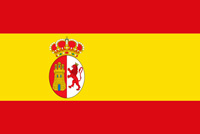 Spain or the Kingdom of Spain, is a country primarily located in southwestern Europe with parts of territory in the Atlantic Ocean and across the Mediterranean Sea. A major country of the Age of Discovery, Spain began the colonization of the New World in 1492 developing one of the largest empires in history and underpinned the emergence of a global trading system primarily fuelled by precious metals.. In addition the Maratha Confederation, the Ottoman Empire, Italy, Naples and the Duchy of Warsaw each had more than 100,000 men under arms. Even small nations now had armies rivalling the size of the Great Powers' forces of past wars but most of these were poor quality forces only suitable for garrison duties. The size of their combat forces remained modest yet they could still provide a welcome addition to the major powers. The percentage of French troops in the Grande Armee which Napoleon led into Russia was about 50% while the French allies also provided a significant contribution to the French forces in Spain. As these small nations joined the coalition forces in 1813-1814, they provided a useful addition to the coalition while depriving Napoleon of much needed manpower.
Spain or the Kingdom of Spain, is a country primarily located in southwestern Europe with parts of territory in the Atlantic Ocean and across the Mediterranean Sea. A major country of the Age of Discovery, Spain began the colonization of the New World in 1492 developing one of the largest empires in history and underpinned the emergence of a global trading system primarily fuelled by precious metals.. In addition the Maratha Confederation, the Ottoman Empire, Italy, Naples and the Duchy of Warsaw each had more than 100,000 men under arms. Even small nations now had armies rivalling the size of the Great Powers' forces of past wars but most of these were poor quality forces only suitable for garrison duties. The size of their combat forces remained modest yet they could still provide a welcome addition to the major powers. The percentage of French troops in the Grande Armee which Napoleon led into Russia was about 50% while the French allies also provided a significant contribution to the French forces in Spain. As these small nations joined the coalition forces in 1813-1814, they provided a useful addition to the coalition while depriving Napoleon of much needed manpower.
HISTORY
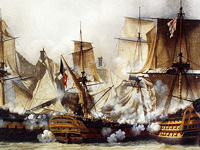
RESOURCES
This article uses material from the Wikipedia article "Napoleonic Wars", which is released under the Creative Commons Attribution-Share-Alike License 3.0.
© Stories Preschool. All Rights Reserved.
